This study guide explores Edgar Allan Poe’s seminal Gothic horror story, analyzing its themes, characters, and symbolism while delving into its psychological depth and historical context․
1․1 Background Information on Edgar Allan Poe
Edgar Allan Poe (1809-1849) was a pioneering American writer, poet, and literary critic․ Known as the father of the modern short story, he excelled in Gothic horror and detective fiction․ His works often explored themes of madness, death, and the human psyche․ Poe’s personal life, marked by tragedy and loss, deeply influenced his writing, reflecting his fascination with the darker aspects of life and the human mind․
1․2 Publication History of The Fall of the House of Usher
The Fall of the House of Usher was first published in September 1839 in Burton’s Gentleman’s Magazine․ This short story quickly gained recognition, solidifying Poe’s reputation as a master of Gothic horror․ It was later included in Poe’s collection of tales in 1840, further cementing its place in literary history as one of his most enduring and iconic works․
1․3 Significance of the Story in Gothic Horror Literature
The Fall of the House of Usher is a cornerstone of Gothic horror, exploring themes of madness, decay, and the uncanny․ Its psychological depth and atmospheric setting have influenced countless works, making it a seminal piece in the genre․ Poe’s mastery of ambiguity and symbolism continues to captivate readers, ensuring its enduring legacy in literary and cultural landscapes․
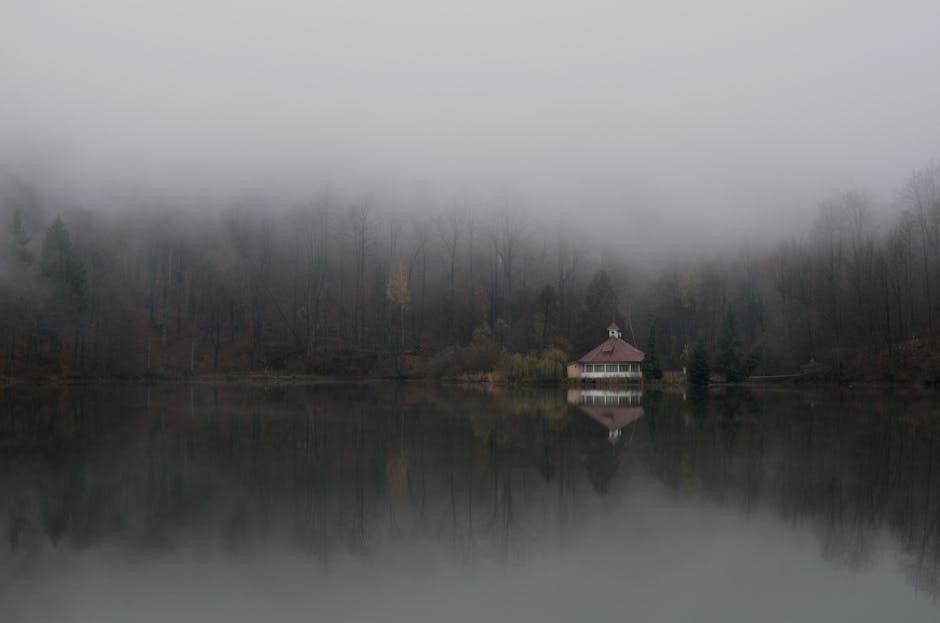
Plot Summary of The Fall of the House of Usher
The narrator visits childhood friend Roderick Usher at his decaying mansion, where he witnesses the eerie decline of Roderick and his twin sister Madeline, leading to tragic consequences․
2․1 The Narrator’s Visit to the Usher Mansion
The narrator receives a letter from Roderick Usher, a childhood friend, requesting his presence at the Usher mansion․ Upon arrival, the narrator is struck by the mansion’s eerie and decaying appearance․ Roderick, now pale and nervous, greets him but seems altered․ He explains his poor health and introduces his twin sister, Madeline, who is gravely ill․ The narrator senses an unsettling atmosphere, foreshadowing the dark events to come․
2․2 The Decline of Roderick and Madeline Usher
Roderick Usher, a sensitive and artistic man, exhibits extreme mental and physical instability upon the narrator’s arrival․ His behavior becomes increasingly erratic, marked by heightened sensitivity to sounds and sights․ Madeline, his twin sister, suffers from a mysterious illness, appearing frail and ghostly․ Roderick believes her condition is terminal, and her presence adds to the eerie atmosphere․ Their decline reflects the darkening of the mansion’s spirit․
2․3 The Burial of Madeline and Its Aftermath
Madeline’s apparent death prompts Roderick and the narrator to entomb her in the family vault․ However, the narrator notices Roderick’s unsettling behavior during the burial․ Following the interment, strange noises and an ominous atmosphere pervade the house․ Roderick’s mental state deteriorates further, fueled by guilt and paranoia․ The entombment sets the stage for the story’s tragic climax, as Roderick’s psyche unravels under the weight of his dark secret․
2․4 The Tragic Conclusion and the Fall of the House
The story culminates in a night of horror as Madeline, buried alive, escapes her tomb and confronts Roderick, leading to their fatal embrace․ The narrator flees, witnessing the house collapse into the tarn, symbolizing the end of the Usher lineage․ This tragic conclusion underscores the inevitability of decay and the intertwining fates of the family and their ancestral home, leaving a haunting legacy of destruction․
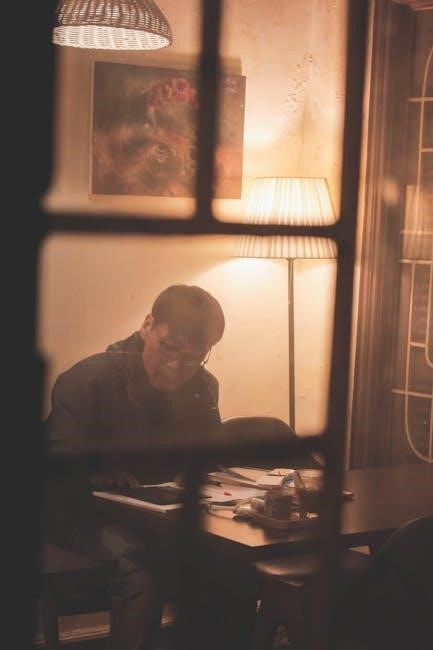
Analysis of Major Characters
This section examines the psychological complexity of Roderick, Madeline, the narrator, and the house itself, exploring their roles in illustrating themes of madness, decay, and isolation․
3․1 Roderick Usher: His Personality and Struggles
Roderick Usher is a complex, hypersensitive character, exhibiting extreme emotional and physical fragility․ His mental state deteriorates rapidly, driven by guilt, paranoia, and an obsession with his family’s dark legacy․ As an artist, he is deeply attuned to sensory experiences, yet his creativity is overshadowed by his descent into madness․ His struggle to maintain sanity ultimately leads to tragic consequences, mirroring the crumbling house itself․
3․2 Madeline Usher: Her Role and Symbolism
Madeline Usher, Roderick’s twin sister, embodies the unconscious mind and the hidden secrets within the Usher family․ Her mysterious illness and premature burial symbolize repression and the inevitability of unresolved trauma․ Her return from the vault represents the eruption of repressed emotions, leading to the destruction of both siblings and the house․ Her presence underscores themes of duality and the inescapable power of the unconscious, central to the story’s psychological depth․
3․3 The Narrator: His Perspective and Involvement
The narrator serves as an outsider whose perspective gradually uncovers the eerie atmosphere of the Usher mansion․ His visit highlights his friendship with Roderick and his growing unease․ Through his observations, the narrator provides insight into the Usher siblings’ decline, acting as a bridge between the reader and the unfolding horror․ His involvement, though passive, underscores the mystery and psychological unraveling within the story․
3․4 The House of Usher as a Character
The House of Usher is a central, animate character, mirroring the decay of its inhabitants․ Its crumbling facade and eerie atmosphere reflect the Usher family’s psychological and physical deterioration․ The house’s dark, gothic presence and the mysterious tarn create a haunting backdrop, symbolizing the inescapable fate and madness that consume Roderick and Madeline․ Its eventual collapse signifies the family’s ultimate downfall and the destruction of their legacy․

Themes in The Fall of the House of Usher
This section examines themes of madness, decay, and isolation, exploring how they reflect the dark aspects of human nature and the inescapability of fate․
4․1 The Theme of Madness and Mental Decay
The story delves into the deteriorating mental state of Roderick Usher, showcasing his hypersensitivity and paranoia․ Madness is portrayed as a destructive force, blurring reality and illusion․ Roderick’s belief in the house’s sentience and his fear of madness highlight the fragility of the human psyche․ The tragic demise of Roderick and Madeline underscores the devastating consequences of unchecked mental decay, symbolizing the collapse of both mind and body․ The house itself mirrors their psychological turmoil, emphasizing the inescapable link between mental instability and physical decay․
4․2 The Inescapability of Fate and Decay
The story underscores the inevitability of fate and decay, as the Usher family’s dark history and crumbling mansion symbolize their irreversible downfall․ Roderick and Madeline are trapped by their lineage, unable to escape the psychological and physical rot consuming them․ The house, a mirror of their fate, collapses alongside their demise, emphasizing the inescapable destruction that awaits them․ Decay permeates every aspect of their existence, sealing their tragic destiny․
4․3 Isolation and Its Psychological Effects
The Usher family’s isolation in their decaying mansion amplifies their psychological turmoil․ Roderick’s hypersensitivity and Madeline’s mysterious illness are exacerbated by their seclusion, creating a sense of inescapable despair․ The oppressive environment fosters paranoia, anxiety, and a detachment from reality, ultimately contributing to their tragic downfall․ Isolation intensifies their inner struggles, highlighting the destructive power of loneliness and confinement in Gothic horror․
4․4 The Power of the Unconscious Mind
The story delves into the unconscious mind’s influence through Roderick’s struggles and Madeline’s haunting presence․ The house symbolizes the mind, with its crumbling structure mirroring the collapse of Roderick’s psyche․ Madeline’s return from the vault represents the unconscious breaking through, overwhelming the conscious mind․ This psychoanalytic perspective reveals the destructive potential of repressed thoughts and desires, central to the story’s eerie and fatalistic conclusion․

Symbolism in the Story
The story is rich in symbols, with the house representing the Usher family’s decaying legacy and the tarn symbolizing the dark, hidden aspects of the psyche․
5․1 The Symbolism of the House
The house serves as a central symbol, representing the crumbling Usher family lineage and the psychological state of its inhabitants․ Its decaying structure mirrors the mental and physical deterioration of Roderick and Madeline, while its eventual collapse signifies the irreversible downfall of both the family and their sanity․ The house embodies the inescapable fate and decay that permeate the story․
5․2 The Significance of the Tarn
The tarn, a small lake reflecting the house, symbolizes the subconscious mind and the duality of reality and illusion․ Its still, mirror-like surface represents the calm facade that hides underlying turmoil․ The house’s reflection in the tarn blurs the line between reality and illusion, foreshadowing the collapse of both the physical structure and the Usher family’s psyche, emphasizing the inescapable fate and decay that pervade the story․
5․3 The Use of Color Symbolism
Poe employs color sparingly but effectively to enhance the eerie atmosphere․ The house’s gray and black hues symbolize decay and mourning, while the absence of vibrant colors reflects the family’s moral and physical rot․ Roderick’s pale complexion underscores his fragile health, and the red blood from Madeline’s coffin signifies death and the breaking of her entombment, heightening the sense of horror and inevitable collapse․
5․4 The Symbolism in The Haunted Palace Poem
Roderick’s poem, “The Haunted Palace,” mirrors the Usher family’s fate, symbolizing their descent into madness․ The palace, once vibrant, becomes a desolate ruin, reflecting the family’s moral and physical decay․ The poem’s imagery of shattered beauty and invasive evil parallels the crumbling mansion and the siblings’ psychological unraveling, serving as a prophecy of their inevitable downfall and the house’s collapse․
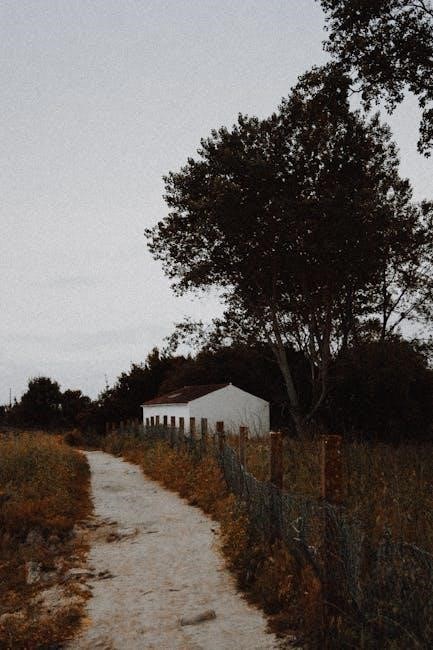
Literary Devices and Style
Poe employs first-person narrative, vivid imagery, and foreshadowing to craft a haunting atmosphere, while his use of irony and symbolism enhances the story’s psychological and thematic complexity․
6․1 The Use of First-Person Narrative
Poe’s use of first-person narrative in The Fall of the House of Usher creates a sense of immediacy and intimacy, allowing readers to experience the eerie events through the narrator’s limited perspective․ This narrative choice heightens the story’s psychological tension and mystery, as the narrator’s reliability and perception shape the reader’s understanding of the unfolding horror․ The first-person voice also emphasizes the narrator’s role as an observer, blending objective description with subjective interpretation, which deepens the story’s haunting atmosphere․
6․2 Imagery and Atmospheric Setting
Poe employs vivid imagery to craft a haunting atmosphere in The Fall of the House of Usher․ The decaying mansion, with its crumbling walls and eerie silence, serves as a visual representation of the characters’ psychological decay; The tarn, a murky lake reflecting the house, adds to the sense of foreboding and symmetry․ Dim lighting, musty odors, and heavy drapery heighten the claustrophobic and melancholic mood, immersing readers in the Usher family’s oppressive world․
6;3 Foreshadowing Techniques
Poe masterfully uses foreshadowing to hint at the tragic events in The Fall of the House of Usher․ The narrator’s eerie first impression of the house, Roderick’s belief in its sentience, and Madeline’s mysterious illness all foreshadow the impending doom․ The dark, decaying setting and Roderick’s haunting poem, “The Haunted Palace,” further suggest the family’s inevitable collapse, creating a sense of inescapable fate․
6․4 The Role of Irony in the Story
Poe employs irony to heighten the story’s tragic tension․ Roderick’s belief in the house’s consciousness contrasts with its literal collapse, symbolizing his own mental unraveling․ The narrator’s skepticism of Roderick’s fears and the ironic timing of Madeline’s reappearance after burial underscore the story’s dark humor and inevitable doom, reinforcing themes of inescapable fate and psychological decay․ Irony deepens the narrative’s haunting and foreboding atmosphere․

Psychoanalytic Interpretation
This section explores the psychological dimensions of the story, examining Roderick Usher as a symbol of the conscious mind and Madeline as the repressed unconscious․ Their intertwined fates reflect the devastating consequences of unresolved psychological conflicts, while the crumbling house mirrors the disintegration of the psyche, highlighting themes of repression and the inescapable power of the unconscious․
7․1 The Concept of the Conscious and Unconscious
The story explores the psychological dynamic between Roderick Usher (conscious) and Madeline (unconscious), symbolizing the mind’s struggle to suppress hidden fears and desires․ The house, reflecting their shared psyche, mirrors the fragility of their mental states․ Madeline’s entombment represents repression, while her return embodies the inescapable power of the unconscious, leading to the collapse of both the house and the Usher siblings, illustrating the devastating consequences of unresolved psychological conflicts․
7․2 Repression and Its Consequences
Roderick Usher’s inability to confront his unconscious fears and desires leads to psychological turmoil and madness․ His repression of Madeline, both physically and emotionally, reflects unresolved guilt and inner conflict․ This repression ultimately triggers her return, symbolizing the devastating consequences of suppressing the unconscious, which destroys both the individual and the familial legacy, echoing Freudian concepts of repressed trauma and its inescapable manifestation․
7․3 The Idea of the “Double” in the Story
The twins Roderick and Madeline embody the concept of the “double,” symbolizing opposing aspects of the psyche․ Their mirrored existence and shared fate illustrate the duality of human nature, with Roderick representing the conscious mind and Madeline the unconscious․ This duality, a common theme in Gothic literature, underscores the inescapable unity of opposites, leading to their mutual destruction and the collapse of the house, their physical and psychological prison․
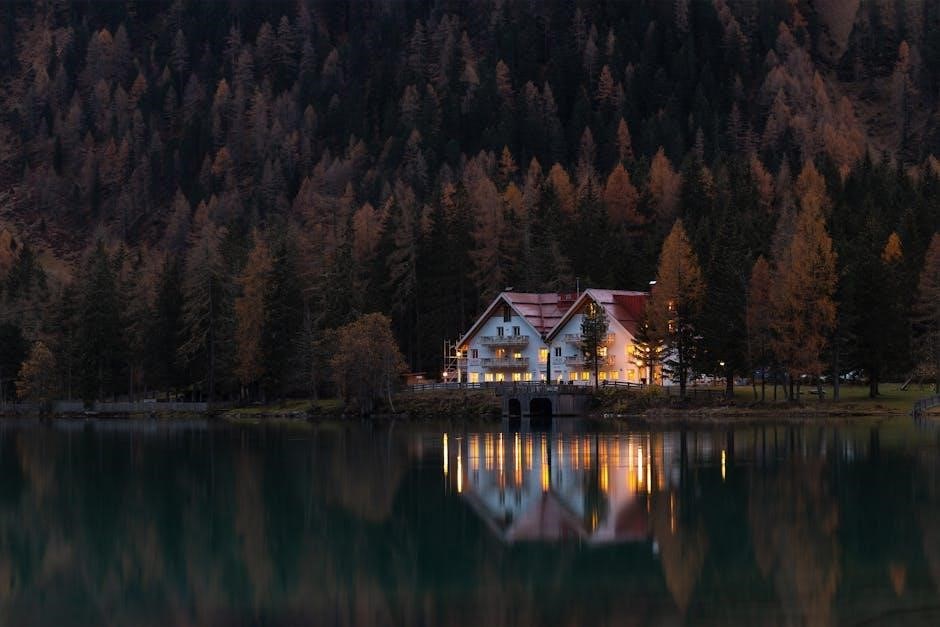
Autobiographical Elements
Poe’s personal struggles with loss and melancholy are reflected in Roderick and Madeline, mirroring his own experiences and emotional turmoil, adding depth to the narrative․
8․1 Parallels Between Roderick Usher and Edgar Allan Poe
Roderick Usher’s sensitivity, artistic brilliance, and psychological turmoil mirror Poe’s own struggles with loss and mental instability․ Like Poe, Roderick experiences profound grief and isolation, reflecting the author’s personal tragedies, such as the early death of his young wife, Virginia․ Both figures embody the fragility of the creative mind, blending genius with despair, as the boundaries between reality and madness blur․
8․2 The Influence of Poe’s Personal Life on the Story
Poe’s personal struggles with loss and mental health deeply influenced The Fall of the House of Usher․ His experiences with premature death, including the loss of his mother and later his wife, Virginia, shaped the story’s melancholic tone and themes of grief․ Additionally, Poe’s interest in psychology and the supernatural, reflecting his own inner turmoil, is evident in Roderick’s fragile mental state and the haunting atmosphere of the Usher mansion․

Cultural and Historical Context
Published in 1839, the story reflects the Gothic horror tradition and Romanticism’s influence, exploring themes of madness and decay within a haunting, atmospheric setting․
9․1 The Gothic Horror Tradition
The Fall of the House of Usher embodies the Gothic horror tradition, featuring a decaying mansion, mysterious illnesses, and supernatural undertones․ The story’s dark, atmospheric setting and themes of madness, death, and familial secrets align with the genre’s emphasis on fear, decay, and the uncanny․ Poe masterfully adapts these elements to explore psychological complexity, elevating the genre to new literary heights․
9․2 The Influence of Romanticism on the Story
The Fall of the House of Usher reflects Romanticism’s emphasis on emotion, individualism, and the sublime․ Poe’s vivid depiction of the decaying mansion and the Usher siblings’ psychological turmoil aligns with Romantic ideals of exploring the darker aspects of human experience․ The story’s focus on Roderick’s heightened sensitivity and artistic expression further underscores Romantic themes of emotional depth and the power of imagination․
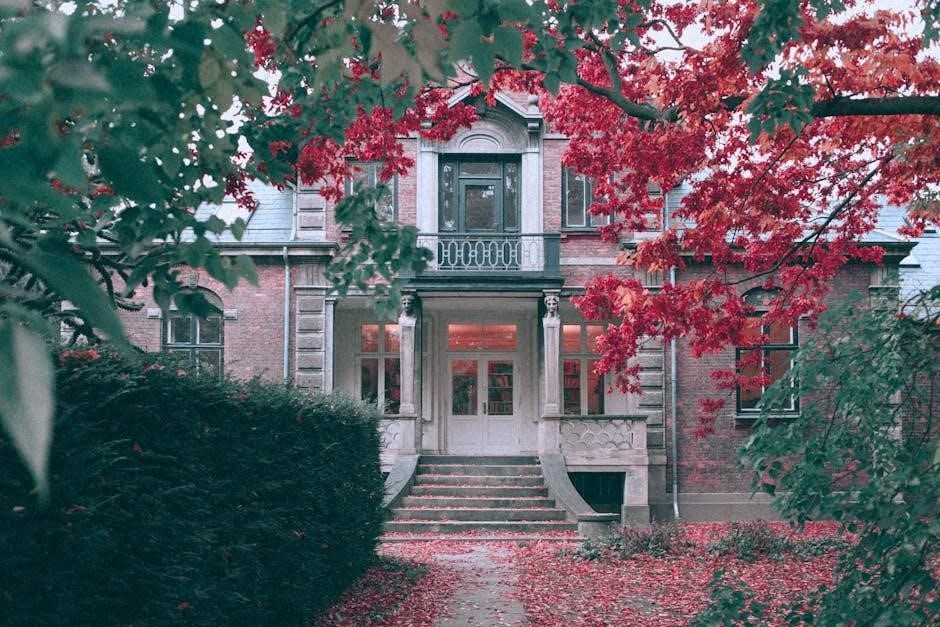
The Fall of the House of Usher in Popular Culture
The story’s enduring impact is evident in its adaptations, including films, TV series, and inspiring other works․ Netflix’s The Fall of the House of Usher series exemplifies its lasting influence․
10․1 Film and Television Adaptations
The story has inspired numerous film and TV adaptations, with Netflix’s The Fall of the House of Usher being a prominent example․ This series, created by Mike Flanagan, features an ensemble cast and blends horror with dramatic storytelling, staying true to the original tale’s eerie atmosphere․ Other adaptations have also explored the story’s haunting themes, ensuring its lasting impact on popular culture․
10․2 Influence on Other Works of Art and Literature
Poe’s masterpiece has profoundly influenced literature and art․ It inspired works like The Haunted Palace poem and numerous literary pieces, with its themes of madness and decay becoming staples in Gothic horror․ The story’s psychological depth has also inspired filmmakers and musicians, cementing its status as a cultural touchstone․ Its impact continues to resonate across diverse creative mediums, ensuring its enduring legacy in popular culture․
Study Questions and Essay Topics
Explore themes, characters, and symbolism through questions like: How does Poe use setting to create mood? What drives Roderick’s madness? Analyze the house’s role as a character․
11․1 Questions for Comprehension
What prompts the narrator’s visit to the Usher mansion? Describe the physical appearance of the house and its surroundings․ What illness afflicts Madeline Usher? How does Roderick explain his family’s history? What happens after Madeline’s burial? Why does the narrator feel uneasy in the house? What role does the poem “The Haunted Palace” play in the story? How does the house’s atmosphere reflect the characters’ mental states? What events lead to the tragic conclusion?
11․2 Essay Topics for Deeper Analysis
Explore the psychological impact of isolation on the Usher siblings․ Analyze the role of the first-person narrator in shaping the story’s reliability․ Discuss the significance of the house as a mirror of the characters’ mental states․ Examine the theme of guilt and its influence on Roderick’s actions․ Investigate the symbolism of the tarn and its connection to the story’s climax․ How does Poe use foreshadowing to build suspense?
Poe’s mastery of Gothic horror shines in this tale, exploring madness, isolation, and the inescapable fate of decay, leaving a lasting legacy in literature and popular culture․
12․1 Key Takeaways from the Study Guide
The study guide highlights Poe’s exploration of psychological decay, isolation, and the collapse of the psyche․ It examines the interconnected themes of madness, fate, and the power of the unconscious, while emphasizing the symbolic role of the house․ The guide also underscores the enduring impact of Poe’s work on Gothic literature and its influence on popular culture, offering a comprehensive analysis of the story’s complexity and depth․
12․2 The Enduring Legacy of The Fall of the House of Usher
Poe’s masterpiece remains a cornerstone of Gothic literature, influencing countless adaptations and inspiring artists globally․ Its psychological depth and haunting narrative continue to captivate audiences, solidifying its place in literary history․ The story’s exploration of madness, isolation, and the unconscious mind ensures its timeless relevance, making it a enduring classic in both literature and popular culture․
